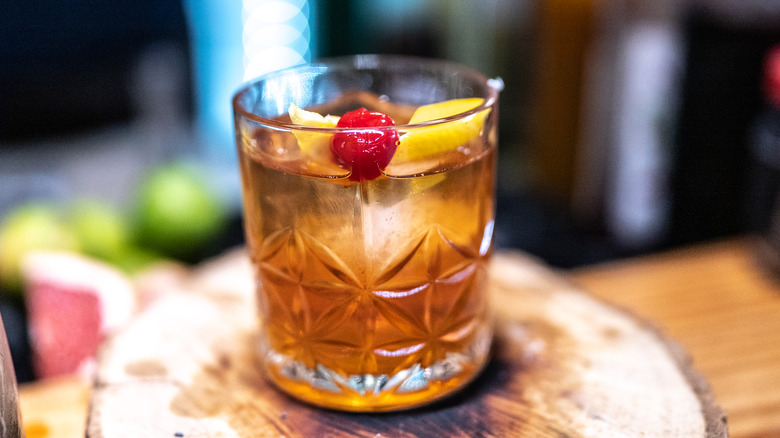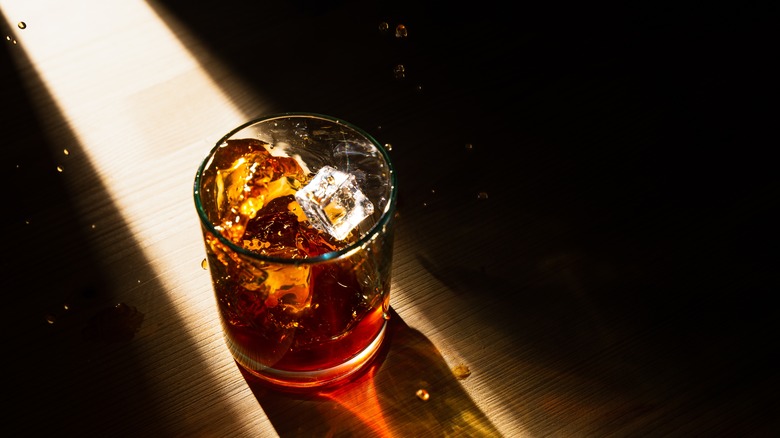Why You Should Use A Higher-Proof Bottle In Your Bourbon Cocktails
Given that they usually only have a handful of ingredients, cocktails are deceptively complex. It can be frustrating as a novice behind the bar when you know a drink is capable of tasting better but you don't have enough experience to identify what the weak link is. With whiskey cocktails, there's high-shelf whiskey and low-shelf whiskey, but generally speaking, high-shelf whiskey is preferred neat. To help us understand what makes a whiskey good for cocktails, we reached out to Executive Bourbon Steward and whiskey influencer Chris Blatner.
"I think a higher-proof bourbon works better in cocktails," Blatner told us. "The higher proof typically means more concentrated flavors that can stand up to the modifiers it is being mixed with." Keep in mind that cocktails and mixed drinks are two slightly different things. A mixed drink is something like a whiskey coke, whereas a cocktail would be a whiskey sour (so long as you aren't using a sour mixer). Some bartenders may disagree, but mixed drinks are good at covering up a subpar bourbon, whereas a good cocktail is highlighting the spirit's positive qualities. By choosing a higher-proof bourbon, we can ensure that its flavors aren't getting drowned out. Blatner went on to say, "I think bourbon cocktails should start with a whiskey no lower than 100 proof and could go as high as 120 proof depending on the cocktail."
The high and low showdown
Whiskey people have strong feelings about proofs. There are plenty of bourbon collectors who scoff at anything below 100 proof. They may make some exceptions for a few select bottles (such as the universally loved Eagle Rare, which sits at 90 proof), but the true connoisseurs tend to value the depth of flavor that only comes with a higher-proof bottle.
The cutoff of 100 proof isn't just an arbitrary love of round numbers, either. Back in 1897, the United States government established the Bottled In Bond Act. The legislation acted as a stamp of approval from good old Uncle Sam that the whiskey you were getting wasn't some backwater moonshine about to irreversibly dissolve your innards. If the bottle you bought was labeled "bottled in bond," you knew what you were getting was a quality product. Among other things, distilleries were required to bottle the whiskey at exactly 100 proof. How they came up with that number isn't entirely clear, but the reputation for higher-proof whiskeys being of higher quality has remained intact.
The bottled-in-bond label has gone in and out of fashion since 1897 but is currently in a renaissance. There's no shortage of craft whiskeys using the label even though the unregulated whiskey environment that provoked the legislation is, thankfully, no longer a problem. It used to be that consumers reached for bottled-in-bond whiskey because everything else was dangerous to their health. Now, it's used as an indicator of premium quality.

